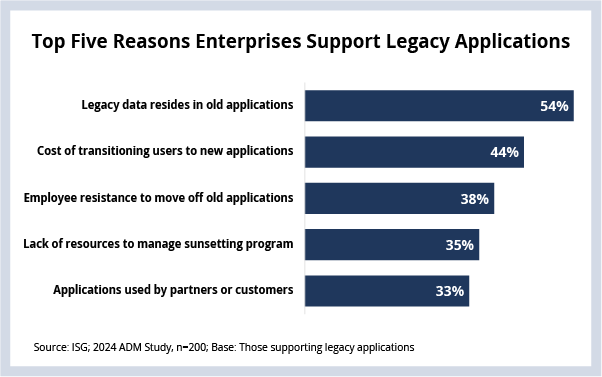Hello. This is Stanton Jones, Sunder Sarangan and Alex Bakker with what’s important in the IT and business services industry this week.
If someone forwarded you this briefing, consider subscribing here.
Application, Data & AI
Enterprises have an enormous volume of critical data locked in legacy applications. AI will be a forcing function for firms to overcome the reasons that have been preventing them from sunsetting or modernizing these applications, which will serve as an important driver for ADM activity this year.

Background
Our most recent Application Development and Maintenance (ADM) Buyer Behavior Study showed that about one in every ten enterprise applications has been classified as “end of life.”
It’s important to keep in mind here that most large enterprises have thousands of applications, so in most cases, this means that hundreds of applications are at the end of their life for any one company.
And, as you can see in this week’s Data Watch, the primary reason companies continue to support these legacy applications is because of the data they contain.
The Details
- 10% of enterprise applications are at “end of life;” that’s over 150 applications on average.
- Half of enterprises continue to support these applications because of the data stored in them.
- Enterprises plan on doubling the number of AI-enabled applications in their portfolios by the end of 2024.
What’s Next
A couple of weeks ago, we talked about the fact that enterprises will nearly double their AI spending in 2024. To do this, companies need to have a strong data foundation. But, today, much of that data is locked inside hundreds of legacy applications.
When the number one reason to continue running a legacy application becomes a major obstacle to a company’s AI strategy, something will need to change. We believe AI will serve as a forcing function this year for firms to start to address the reasons they continue to run certain legacy applications.
This means that application optimization will be an important attribute of ADM activity in 2024. Companies will rely on their outsourcing providers for the resources required for these legacy transformation programs as well as their ability to combine cost optimization with modernization.
